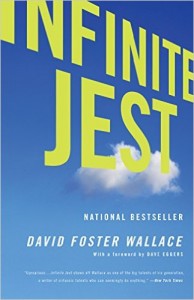Here in Southern California, we’re having a heat wave. Temperatures hover in the high 80′, 90’s, and in some places, 100’s. This is not a complaint. People living in other parts of the country have weather and environment issues too. But with few homes equipped for these temperatures, i.e. no air conditioning, moving more than necessary becomes unappealing.
So, if your energy has been zapped by the heat, consider watching and reading some of the books, Ted Talks, and documentaries listed in this article. They’re all related to happiness and Positive Psychology.
Positive Psychology research indicates that the essential ingredients for living a long, healthy, satisfying life are:
- close connections with others
- a purpose higher than oneself
- a genetically set high base-level of happiness
- daily habits that support and increase happiness including exercise, meditation (mindfulness), smiling and participating in activities you enjoy
Money helps too, but only to a certain degree ($50-80k per year).
If you are not as happy as you would like, are you are looking for happiness in all the right places? Or are you focusing too much on momentary pleasure and not enough on the bigger picture? The suggestions for increasing satisfaction in life in these books and videos come from rigorous scientific research, which differs, and sometimes opposes, advice in self-help books. As an example, instead of suggesting that you replace “negative” thoughts with “positive” thoughts to feel happier, you will learn that this mind-over-matter approach does not always work. And you will learn why. (The Happiness Hypothesis, J. Haidt). Martin Seligman, founder of Positive Psychology moves us beyond pleasure and contentment and toward flourishing. Enjoy reading. I will update this list from time to time, so check back.
Books
Founder of Positive Psychology, Martin Seligman, PhD. kicked off the journey into happiness when he discovered that “…psychology has badly neglected the positive side of life. For every one hundred journal articles on sadness, there is just one on happiness” (Authentic Happiness: Using the New Positive Psychology to Realize Your Potential for Lasting Fulfillment, 2004, p. 6). Scientists write journal articles to publish the results of their research, which means that the psychological community pays more attention to what’s wrong with human beings than what’s right with us.
To learn about your “positive” attributes, take some of the self assessments on the Authentic Happiness website. Or the ViaCharacter website.
The How of Happiness: A New Approach to Getting the Life You Want (2008), Sonja Lyubomirsky, PhD., begins with the question: Can you be more happy? and continues with self-assessments to determine your current level of happiness, a discussion about what happiness is and is not, and suggestions for ways to increase your level of happiness. So yes, the answer is you can be more happy. The How of Happiness is a practical how to be more happy book written by a research psychologist who backs her suggestions with research.
The Happiness Hypothesis: Finding Modern Truth in Ancient Wisdom (2006) Jonathan Haidt, PhD. references Plato, Edgar Allen Poe, Buddha, Shakespeare and other wise minds to build his happiness theory. He uses the metaphor of a rider on an elephant to describe confusing human behavior. The rider (conscious mind) says go this way, and the elephant (everything else), when not aligned with the rider, says, no, we’re going this way. Guess which way the pair go? This delicious read begins with a discussion about the many divisions of the human experience (body/mind, left brain/right brain, old brain/new brain, voluntary/autonomic nervous systems) suggesting that each of us has more of an inner committee than a unified voice and concludes with “By drawing on wisdom that is balanced…we can train the elephant…”
Harvard professor Daniel Gilbert, PhD. bases his book Stumbling on Happiness (2005), on the premise that the difference between humans and other animals is our interest in thinking about the future. “…thinking about the future can be so pleasurable that sometimes we’d rather think about it than get there” (p. 18). We have little ability, however, to predict the future. Imagine if we could! There would be no more fun in playing the lottery or stock market. But we’d have peace, a healthy environment, with no poverty, violence, and anger.
Martin Seligman leads the way again with his book Flourish: A Visionary New Understanding of Happiness and Well-being (2011) which moves our attention beyond happiness and toward flourishing. Flourish, according to the online Merriam-Webster dictionary mean “to grow well : to be healthy : to be very successful : to do very well.” Another online definition that just popped up in its own box above all of the other results seems more fitting “(of a person, animal, or other living organism) grow or develop in a healthy or vigorous way, esp. as the result of a particularly favorable environment” because we cannot rule out the influences of the world around us. According to this new theory, to flourish, an individual must have: PERMA. Positive emotion (or happiness); engagement or interest; (positive) relationships; meaning; and accomplishment.
Documentaries and Ted Talks
You can find all of the following documentaries on Netflix and the TEDTalks on TED.com. When indicated, they can be streamed and watched right away.
Documentary: Stress: Portrait of a Killer (National Geographic, 2008). The human nervous system has had inadequate time to adapt to the environment in which we live. Rush here, rush there, multitask, manage complex financial demands, plan for the future, buy a new car, climb the social ladder. Is your house bigger than your neighbor’s? We live with in-your-face and less obvious sources of stress. To understand the stress response in our “natural” environment, Stanford neurobiologist Robert Sapolsky turns to baboons in the African savannah, the habits and hormones of which he has studied for more than 30 years. This documentary includes the work of other scientists who study the effects of stress as well. Available from Netflix to stream or as a DVD.
Documentary: Remember Harvard psychologist and author of Stumbling on Happiness, Professor Daniel Gilbert? PBS produced a three-part award-winning documentary hosted by Dan Gilbert: This Emotional Life (2010). Part One: Family, Friends, and Lovers; Part Two: Facing Our Fears; Part Three: Rethinking Happiness. Also available on PBS streaming.
TEDTalk: Daniel Gilbert again, this time on TED. Dan Gilbert: The surprising science of happiness (filmed on February 2004).
TEDTalk: Dan Gilbert: Why we make bad decisions
TED Playlist: What makes us happy? (9 talks) includes the two above.





